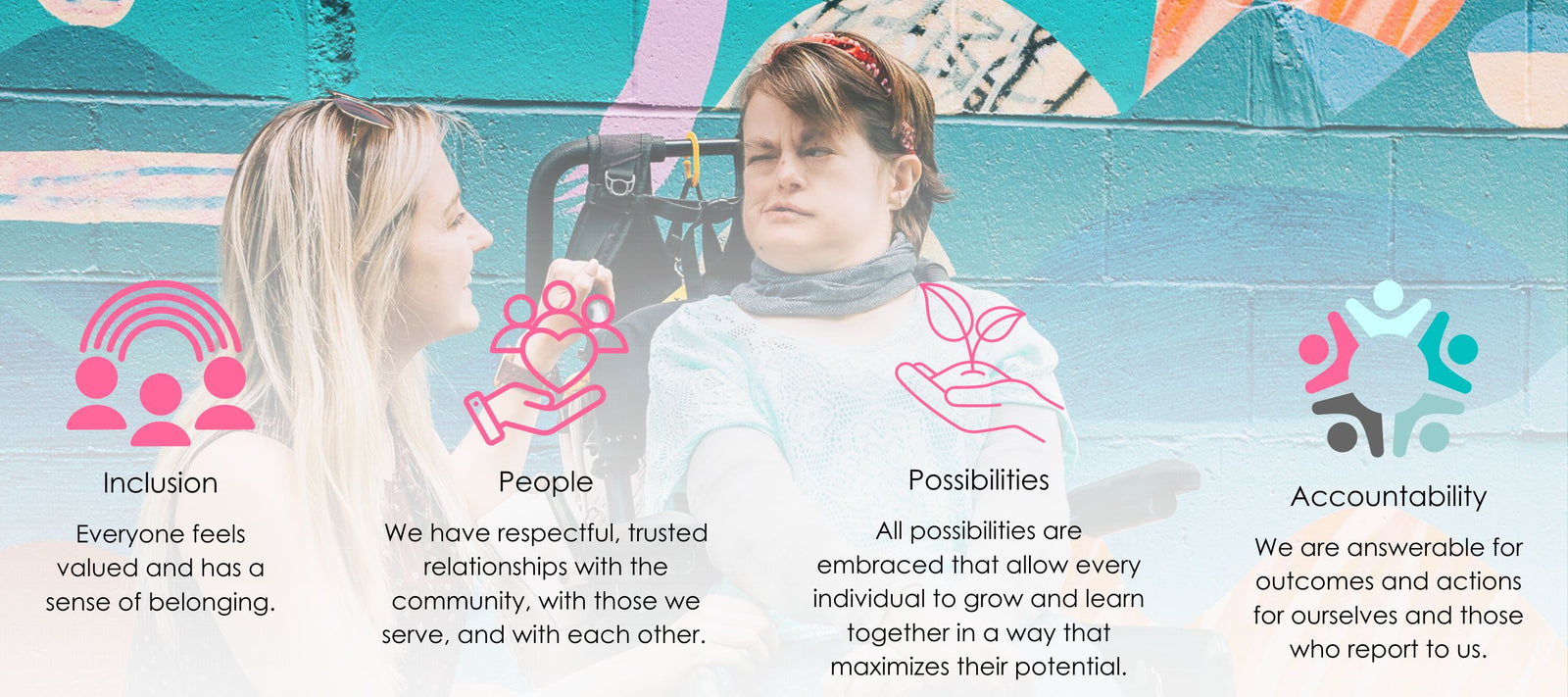Programs and services
who we are
Get Involved

Understanding inclusion: Plus 5 tips to be more inclusive
June 14, 2024 4 min read
There's a good chance you felt excluded at some point in your life. No matter how hard you tried (or didn't), you've experienced what it's like to not belong.
Perhaps you are neurodivergent, constantly trying to fit into a world designed for neurotypicals. Or you started a new job only to learn the office isn't structured to accommodate your wheelchair. Or maybe you are a person of colour in a predominantly white community.
Whether this feeling of exclusion is prolonged or temporary, these authentic and valid experiences can impact a person's mental health and well-being.
What exactly is inclusion?
Inclusion is a universal human right that aims to eliminate discrimination and intolerance and ensure equal access and opportunities for everyone.
It means embracing differences—whether they pertain to race, gender, disability, sexual orientation, medical conditions, or other needs—and celebrating what makes each of us unique.

Why should you care about inclusion?
The answer is simple. It benefits everyone and is vital for a thriving community.
Let's break down why inclusion matters so much.
Social Benefits
Inclusion is essential for creating communities where everyone belongs. Imagine a neighborhood where people watch out for each other, participate in local events, and support local initiatives. This behaviour helps to build a more trusting and relaxed environment that creates better living conditions for everyone.
However, a critical and often overlooked part of creating connected communities involves including people with intellectual disabilities in decision-making roles. Too often, decisions are made on their behalf without their input.
When people with intellectual disabilities participate in decision-making, their needs and perspectives are genuinely understood and respected.
And this sense of belonging unites people, creating more connected communities.
Economic Benefits
Inclusion also makes economic sense. When we include everyone, we unlock diverse perspectives and talents. This diversity leads to more creativity and innovation.
An eclectic mix of people will bring different ideas and experiences. They're likely to develop more innovative solutions than a team where everyone thinks the same way. When people feel their contributions matter, they are more motivated and engaged.
This can boost overall economic growth and prosperity in your community.
Plus, inclusive practices can help lift people out of poverty by giving everyone equal access to education, jobs, and other opportunities. When marginalized folks have the chance to succeed, they can contribute more to the economy.
This doesn't just improve their lives—it makes the whole community stronger and more prosperous.
By embracing inclusive practices, you can help create an environment where everyone can contribute to and benefit from your community's success.
Psychological Benefits
When people feel accepted and valued, they are more likely to have higher self-esteem and confidence and less likely to experience stress, social isolation, anxiety, or depression. This sense of acceptance is critical in mental health and well-being.
Most humans have an innate drive to connect and interact with others. And inclusive environments provide opportunities for social interaction, building relationships, and participating in activities that promote mental health.
These environments nurture a sense of belonging and community, where everyone can express themselves freely and seek help when needed.
This promotes mental health and contributes to overall happiness and well-being. And happier, healthier individuals are better equipped to contribute positively to society, enriching communities.

Implementing Inclusive Practices
Creating an inclusive community takes time. However, small, intentional actions can make a big difference.
Here are five things you can do to be more inclusive:
1. Listen and Learn
Engage in Conversations: Take the time to listen to people from marginalized communities, including those with developmental disabilities. Ask them about their experiences and needs. This will help you understand their perspective and make them feel heard and valued.
Educate Yourself: Learn about the challenges people might face. For example, a refugee family may have vastly different needs than a young, wealthy family moving to town. Understanding these issues better equips you to offer meaningful support and champion inclusive practices.
2. Promote Accessibility
Physical Accessibility: Advocate for public spaces, workplaces, and community events to be accessible to everyone. This includes installing ramps, widening doorways, and providing accessible restrooms and sensory-friendly spaces.
Communication Accessibility: Use clear and straightforward language. Provide materials in various formats, such as large print, braille, or digital formats with screen-reader compatibility. Consider using visual aids and simple language for those with developmental disabilities. Additionally, consider the needs of non-native speakers and provide materials in multiple languages.
3. Foster Inclusive Activities
Inclusive Events: Organize community events that are accessible to everyone. These might include sensory-friendly activities, adaptive sports, or inclusive arts programs tailored to diverse needs.
Encourage Participation: Invite people from all marginalized communities to join local groups, clubs, or committees. Their involvement can offer new perspectives and enrich the community. Ensure these groups are welcoming and accommodating to diverse needs.
4. Advocate for Inclusive Policies
Support Legislation: Advocate for policies that promote inclusion at the local, provincial, and national levels. This could involve better funding for services for all marginalized groups, more robust anti-discrimination laws, and initiatives that support independent living.
Workplace Inclusion: Encourage employers to adopt inclusive hiring practices and provide accommodations for employees with developmental disabilities. Support training programs that educate employees about diversity and inclusion. This will benefit individuals and enrich workplace diversity and productivity.
5. Celebrate Differences
Highlight Stories: Decenter privileged folks in your community and share success stories of individuals from various marginalized communities, including those with developmental disabilities, LGBTQIA2S+ individuals, and persons of color.
Cultural Events: Host events celebrating diversity and inclusion, such as disability awareness days, pride events, or cultural festivals (be sure to collaborate with these communities to avoid cultural appropriation). These events can educate the community and encourage a more inclusive culture.
Facilitate inclusion in your community
Inclusion is more than just a principle. It's a practice that enriches all lives.
By consciously embracing and celebrating differences, you can create a community where everyone can thrive and feel a sense of belonging.
Small actions, from listening and learning to broader initiatives like advocating for inclusive policies, are a step closer to a more connected and compassionate society.
A world where everyone, regardless of their abilities, can contribute their unique talents and perspectives sounds like a stellar place to live!
Are you ready to make inclusion a cornerstone of your community? Ensuring everyone feels valued, respected, and empowered to participate fully in society.
Leave a comment
Comments will be approved before showing up.
sign up!
Join our email list to get insider news and updates.














